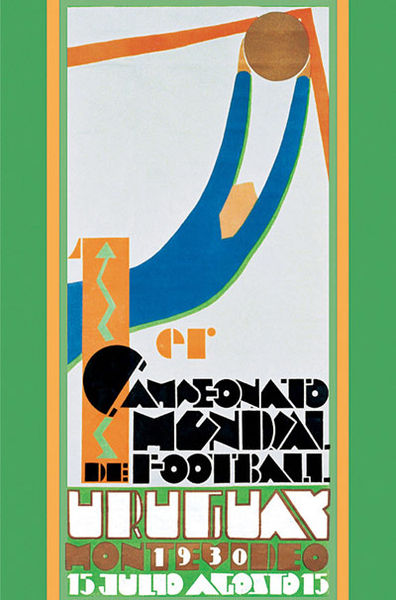*Image Credit: Wikimedia Commons After successfully managing three tournaments at the Summer Olympics, Jules Rimet – the president of the Federation Internationale de Football Association (FIFA) – finally saw his dream of a professional tournament bringing the best national teams in the world together to decide a champion come to fruition on July 30, 1930. The capital of Uruguay, Montevideo, hosted all 18 matches and gave birth to the world’s most watched sporting event. As early as 1906, FIFA began discussions for the creation of a quadrennial tournament to decide the best team on the planet, but early attempts to do something outside the Summer Olympics failed spectacularly. The organization, careful to protect its own ambitions, recognized the Games as a “world football championship for amateurs” and, beginning at the 1920 Summer Games in Antwerp, oversaw the competition. The popularity of the tournament was evident from the start, motivating FIFA President Jules Rimet even more. Finally, at meetings during late May 1928, members of the governing body agreed to have a world championship. Due to the success of the Uruguayan national team – two-time Olympic champions – and the nation’s upcoming centennial, FIFA governors elected to award the tournament to the tiny nation in South America in 1929. Eager to host the first event, funds were immediately appropriated for the construction of a new stadium, the Estadio Centenario, which would end up being the site for a majority of the matches. Uruguay’s location, however, would end up causing more problems than FIFA had anticipated. Nestled along the central coast of eastern South America between Brazil and Argentina, the travel cost for many nations ended up being too much – even with the Uruguayan offer to reimburse travel expenses. The British, Germans and Italians all baulked at a trip to the Southern Hemisphere, but Rimet only grew more determined to get some European participation. With just two months to spare before the first match, Belgium, France, Romania and Yugoslavia agreed to send teams by sea. Rimet, the trophy, three referees and all but the Yugoslavian squad crossed the Atlantic aboard the SS Conte Verde, arriving in Rio de Janeiro on June 29th, where the Brazilians joined the cruise for the final leg to Montevideo. (The Yugoslavians took the mail ship Florida.) From the first match, a 4-1 victory for France over Mexico, to the Uruguay’s 4-2 win over archrival Argentina in the final, more than 585,000 spectators packed the venues. The event was, without a doubt, a hit. The seven South American, four European and two North Americans put on a show that caught the imagination of soccer fans the world over. The tournament would move to Europe in 1934 and 1938, with Italy winning both times. After suspending the competition during World War II, the event shifted to Brazil in 1950 and has occurred every four years since growing each year to the point more than 700 million people witnessed the 2010 World Cup Final between Spain and the Netherlands. You may also like : July 30 762 – Caliph Al-Mansur founds the city of Baghdad
July 30, 1930 CE – The First Football World Cup Crowns a Champion in Montevideo, Uruguay
*Image Credit: Wikimedia Commons After successfully managing three tournaments at the Summer Olympics, Jules Rimet – the president of the Federation Internationale de Football Association (FIFA) – finally saw his…
317

 July 30 762 – Caliph Al-Mansur founds the city of Baghdad
July 30 762 – Caliph Al-Mansur founds the city of Baghdad